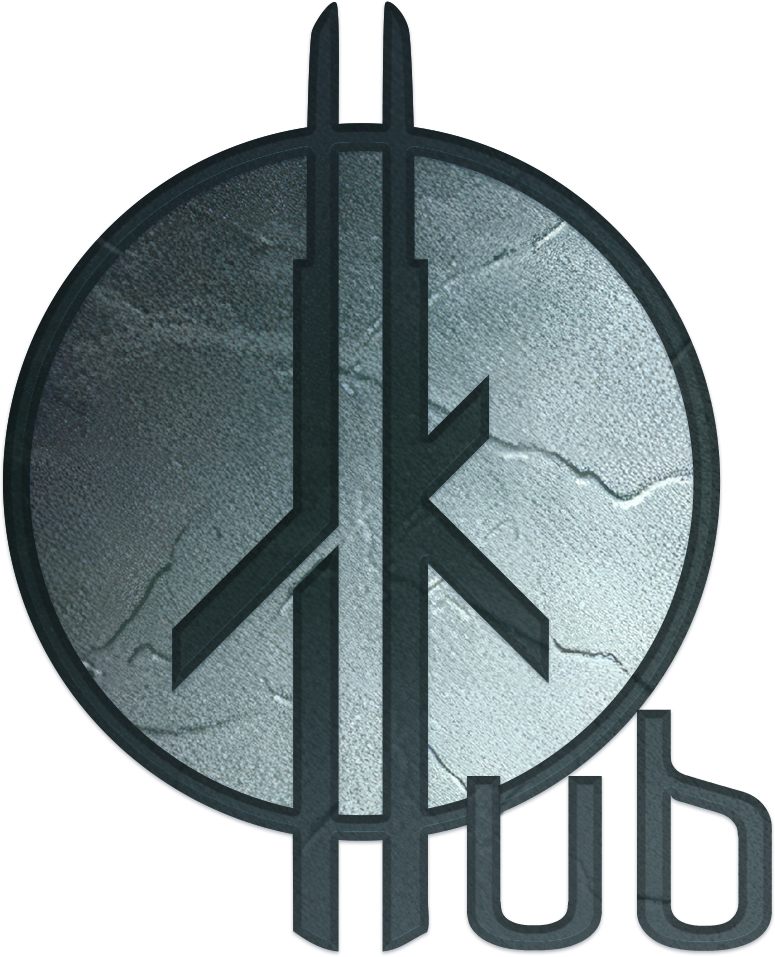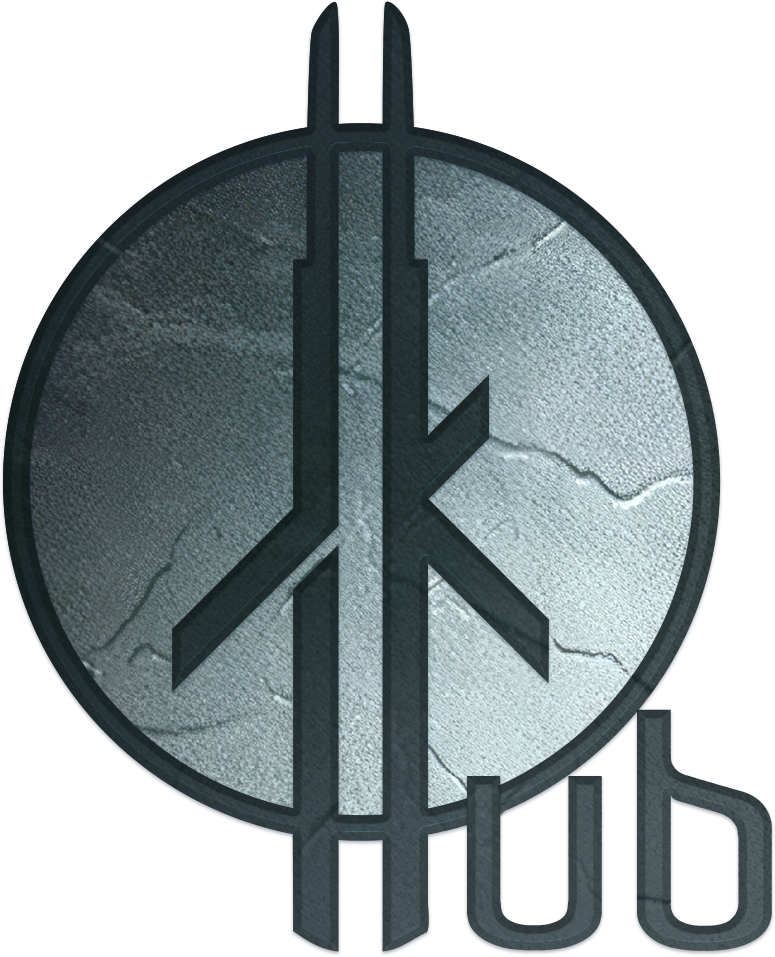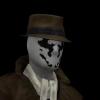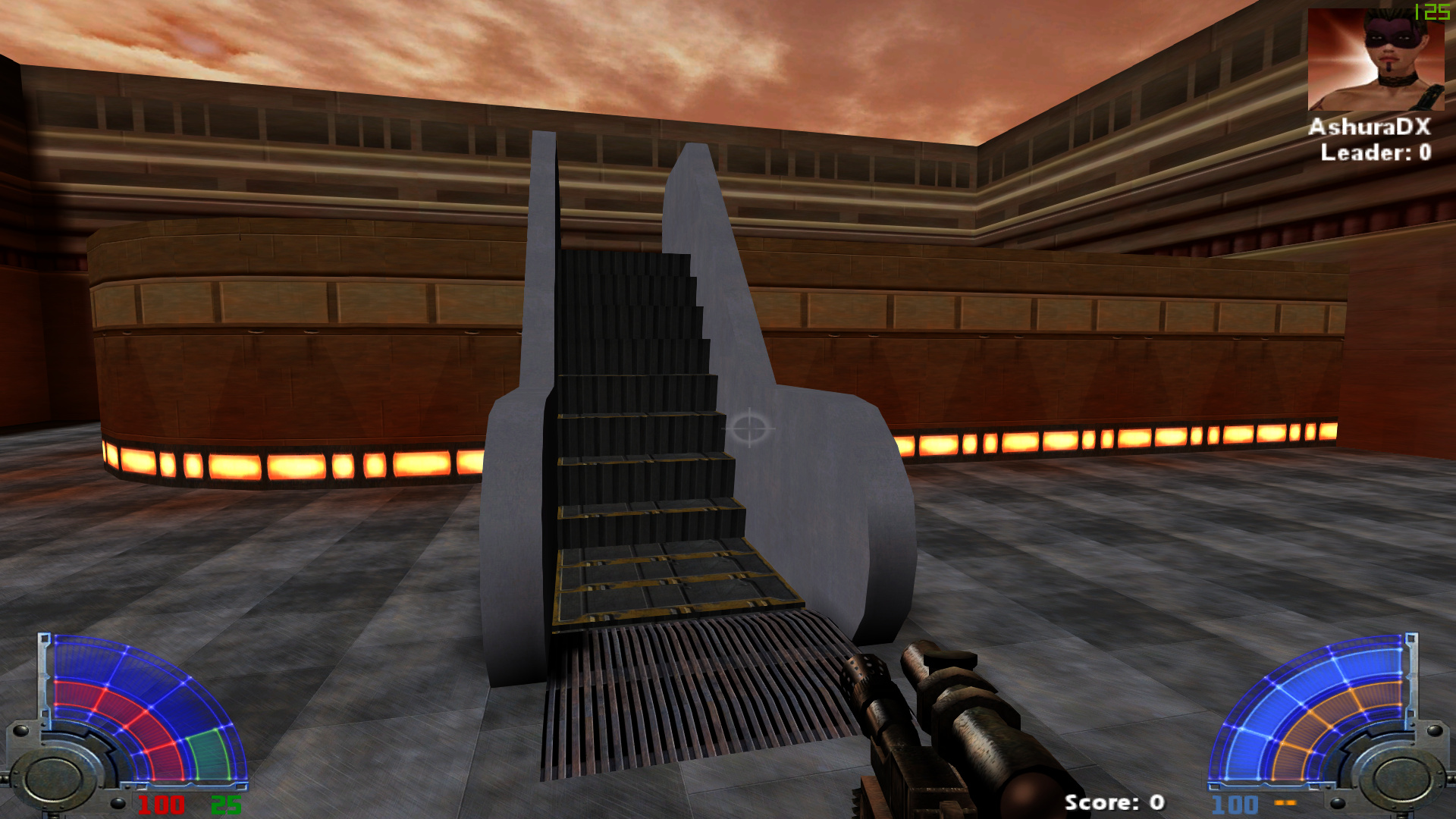-
Posts
2,319 -
Joined
-
Last visited
Content Type
Profiles
News Articles
Tutorials
Forums
Downloads
Posts posted by AshuraDX
-
-
I messed with this for a bit, rof is sadly not an option if you want to have more than one escalator and that escalator is supposed to travel a sensible distance.
Based on that I'd guess that func_train is the best method to achieve a working escalator, here's an example map with an escalator using func_train: https://www.dropbox.com/s/9114k9nvi2hwisq/EscalatorJKA.zip?dl=0

The map consists of two rooms, one room where the escalator will be, and another room used to properly light the escalator steps, if you don't do this half of your escalator will turn out pitch black.
-
I'd probably use *.rof paths for this.
Here's an example:
Link to files used: https://www.dropbox.com/s/plrq0bgjaen2ry3/Minecart.zip?dl=0
This works by creating an animation in a 3d program like 3ds max or blender and exporting it using the respective *.rof exporters for them.
Currently only the blender exporter is publicly available.
OCD2 likes this -
What you just discovered is a limitation of the default radiant brushformat, it only projects textures from the world axes. If you can change the brush format to use brush primitives this problem should go away.
OCD2 likes this -
8 hours ago, S3rafim said:
I used your sab exactly as you pasted it.
And yes, I tested it on mp, not single, but not in openjk, but I don't believe the latter is an issue
It really does not work in multiplayer which is odd to say the least. I may have to do some more digging to figure out what needs to be changed to make it work in MP (if possible at all)
-
4 hours ago, S3rafim said:
Sorry, I got a little occupied and didn't have time!
So, the trailstyle works perfectly, but noblade and noDlight doesn't seem to work. Both blades are normally visible and have a light.
That is odd, did you try the .sab file I pasted? Does it work properly with that?
I only tested this in openjk sp, didn’t try it in MP at all.
-
On 6/13/2020 at 1:19 PM, S3rafim said:
That's awesome, I'll test it out first thing when I'm at a pc and I'll feedback you!
Thank you!
Did you get it to work?
-
I played around with this and got utterly confused since the wiki entry on this is incomplete, so I decided to snoop around in the source code a bit and found what I needed to know to get this to work:
dual_test { name "Test" saberType SABER_STAFF saberModel "models/weapons2/saber_dual_1/saber_dual_1.glm" soundOn "sound/weapons/saber/saberon.wav" soundLoop "sound/weapons/saber/saberhum4.wav" soundOff "sound/weapons/saber/saberoff.wav" saberColor red saberColor2 blue numBlades 2 saberLength 32 saberStyle staff throwable 0 singleBladeStyle medium singleBladeThrowable 1 brokenSaber1 brokenstaff brokenSaber2 brokenstaff twoHanded 1 //define Bladestyle 1, you can have a maximum of 2 bladestyles per saber noblade 0 trailstyle 0 noDlight 0 //define Bladestyle2 noblade2 1 trailstyle2 1 noDlight2 1 //Tell the game to use bladestyle2 for all blades after Blade 1, so blade 2...8 will use bladeStyle2 BladeStyle2Start 1 }I hope this helps @S3rafim
EDIT: I also updated the wiki entry about .sab files with this.
-
Guys, please keep it civil.
If the files were taken down for that reason a handful of people from our community may be up next to similiar takedowns. I have no clue what might follow for JKHub if these hypothetical cases started to pile up.This should not be an event to celebrate.
I‘d much prefer seeing this takedown be due to personal reasons than a DCMA.
However, the only person capable of shedding some light on this is @The Punisher himself. And it is his decision on whether he does or not.Please keep it down guys.
OCD2 likes this -
fbx is not supported by radiant
-
-
Merged with your previous Thread - please update your thread instead of posting a new thread for every update.
-
Try using Cagelights updated exporter instead.
afaik it handles the seam splitting for you, saving you all that hassle.
-
Could it be some horrendous texture setting that screws you over and prevents you from seeing any improvement?
try replacing one texture with something drastically visully different at the same resolution just to verify that its actually not loading
Droidy365 likes this -
Should be doable with a menu edit I think.
Not sure though.
-
Yes there are multiple options to do that actually.
It largely depends on the type of alpha channel used in the texture.
One option for the hair shader stage that gives soft, fading transparency:
{ map models/mymodel/hair.tga blendFunc GL_SRC_ALPHA GL_ONE_MINUS_SRC_ALPHA rgbGen lightingDiffuse }The other which gives you crisp hard egded transparency:
{ map models/mymodel/hair.tga alphaFunc GE128 blendFunc GL_ONE GL_ZERO rgbGen lightingDiffuse }And a third, also hard edged transparency option for if the result you get is the inverse of what you want (transparent hair, visible white spots):
{ map models/mymodel/hair.tga alphaFunc LT128 blendFunc GL_ONE GL_ZERO rgbGen lightingDiffuse }let me know if you need more help with this, just @ me

-
@JCulley3D Md3 models must not have more than 1000 verts per surface/mesh. This includes Tverts and Nverts from Smoothing group breaks.
ASE models can have any amount of vertices but a softcap of 1000verts total after which the smoothing is completely borked by q3map2 (fixable using a shadeangle in your shader)
@JCulley3D and yeyo JK like this -
@Mhoker I moved this thread over to the Modding/WIP Section for you. I think more people will find it here.
-
Ah, you're using Pandes Brush export script?
If you want a trisoup style export you'll have to create a set of offset vertices N Units in negative vertex normal direction.
When it comes to the sides of those brushes you should keep in mind that those need to be split into planes/triangles to maintain a convex shape for the entire brush. If you fail to do this properly you will end up with holes in your brush surfaces which is an issue that can be solved with a bit of math. Message me on Discord if you need some pointers here.
-
A sky shader with multiple suns needs careful balancing in brightness and a fair few suns, just two or three won't really cut it. I used platonic solids as the basis for my lightdomes, first the skybox is converted to a skysphere, then the solid is aligned to the brightes spot on the skysphere with its first vertex. From there the pixel colour of the skyspheres texture is transferred to the solid's vertex colours. Afterwards the brightness values of the vertex colours are normalized and stuck into an exponential expression which yields a factor for the brightness of the sun/light "born" from that specific vertex. This can give very nice results depending on the solid used (which directly correlates to the number of suns/lights) and the skybox textures themselves as well as the exponential expression and chosen max light value.
I'd suggest using at least 8 bounces and losing the minlight value as that once again washes out your shadows. It shortens your range of brightness by offsetting your black point towards gray. Which helps if your goal is to make everything a playable brightness, but is guaranteed to kill the believability of your lighting since areas that should be unlit will have some mysterious brightness to them.
I can not remember what -dark did exactly, but I've seen those kind of lighting glitches on terrain without using -dark. Interestingly I didn't see that type of glitch on brushes until now, only on models and patches. If you want to try a brush based version of that terrain let me know and I'll run it through Q3ME for you.
-
@ArtemisI'd avoid using ambient light, it adds light on a global level which kills your option of having dedicated dark areas on the map. Try increasing the light bounces in the compiler and try to come up with some neat lightsources for the interior.
It will most certainly look even better with believeable light.
EDIT: this might be a good use case for a script I made a while ago. The script takes a skybox shader as input, calculates multiple shader suns based on the sky color and spits out a light dome kind of shader that illuminates from all sides with varying lightstrengths and colors.
It was inspired by a script a quake 3 Mapper made for one of his maps in Maya: http://lunaran.com/page.php?id=218
Artemis likes this -
@Archangel35757 @Stryker I would not use any sort of ffd in max either, I'd create a new keyframe, pose the skeleton to match the model, quickly weight the model to the now posed skeleton, reverse the slider on the timeline back to the original position then freeze the current vertex positions on the mesh and delete the keyframe.
This should give you a perfectly posed model for weighting.
-
Couldn't find it anymore - sorry!
-
I made something like that a few years ago. I'll see if I can find it when I'm home from work later.
-
Hey,
The height of a model is not changed by altering the glm file. Doing so will in fact break animations for the adapted model.
The Proper way of changing a model's height depends on whether you want to commit that change for multi player or for single player.For single player you should look into npc files, which can be edited with any text editor.
For multi player it's a bit more complicated, I think it's only possible with JA+/JA++ and some other larger modifications to the game.
Regardless of that, if you do want to edit a glm file in Blender you will need to download the glm plugins for Blender, which you can find in the files section right here:
https://jkhub.org/search/?q=Blender&type=downloads_fileYou will need to pick the proper plugin version for your Blender version.





Back with another question
in Modding Assistance
Posted
That's a python exception, something caused the exporter itself to crash. @Cagelight another "try block" to prevent this should be added to the code.